
Your gift to MCB empowers our community to make groundbreaking research discoveries, provides a world-class education for our students, and builds a culture of inclusion and belonging. Support from our alumni and friends is critical to the future success of our department as we work together to strive for excellence in all that we do.
Your gift makes a difference!
Learn how you can support our community below.
 Learn about our fundraising initiatives and outcomes! Learn about our fundraising initiatives and outcomes!  |
| MCB Departmental Funds Make a powerful impact with a gift designed to meet the department's most critical areas of need from graduate student fellowships, recruiting renowned scientists, innovating teaching and lab facilities, and supporting groundbreaking research discoveries in one of our specialized research divisions. |
|
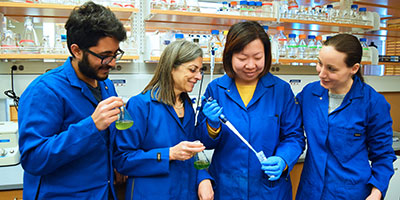 |
Friends of MCB Make a powerful impact with a gift designed to meet the department's most critical areas of need such as recruiting renowned scientists, innovating teaching and lab facilities, and uncovering fascinating truths about the life sciences. |
 |
Nancy Walls and Randy Schekman Fellowship Your contribution to graduate student fellowships support our incredibly promising young scientists to discover bold new ideas that transform outcomes for our health, our environment, and our economy. |
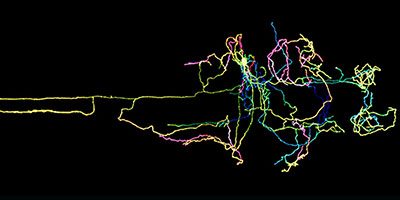 |
Friends of Biochemistry, Biophysics, and Structural Biology (BBS) Image: A single locus coeruleus neuron imaged post fertilization in live zebrafish. Tong Xiao, Chang lab and Elizabeth Carroll, Isacoff lab. |
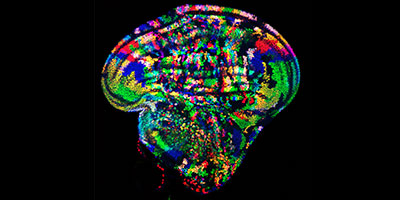 |
Friends of Cell Biology, Development, & Physiology (CDP) Image: The TIE-DYE technique demonstrates how the same protein (Dpp) can promote growth (large patches) or inhibit growth (small patches) in different parts of the same tissue - the Drosophila wing disc. Melanie Worley, Hariharan lab. |
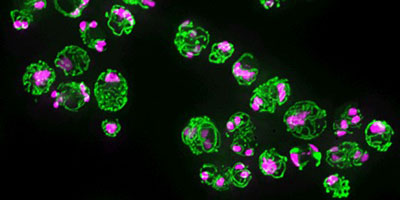 |
Friends of Genetics, Genomics, Evolution & Development (GGED) Image: Fluorescence micrograph of mitochondria (green) and nuclei (magenta) of yeast undergoing meiotic differentiation. Eric Sawyer, Ünal lab. |
 |
Friends of Immunology and Molecular Medicine (IMM) Image: 12 micron section of the olfactory epithelium from a mouse that received fluorescent T cells (yellow) stained with DAPI (magenta). Derek Bangs, Robey lab. |
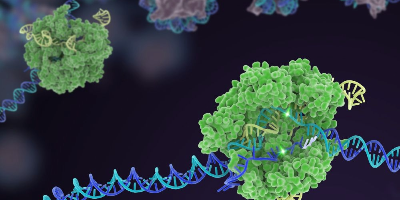 |
Friends of Molecular Therapeutics (MTx) Image: CRISRP/Cas9 illustration. Innovative Genomics Institute (IGI). |
| College of Letters & Sciences Biological Sciences Funds | |
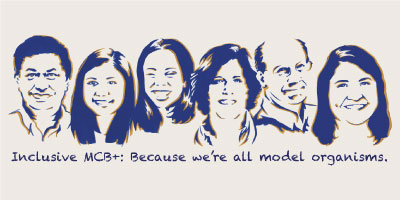 |
Inclusive Biological Sciences Join our efforts, like student-led inclusiveMCB+, which are committed to improving diversity, equity, and a sense of belonging on campus through initiatives including conferences, mentoring programs, and academic support. |
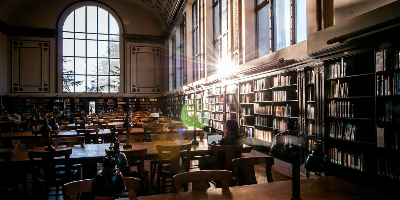 |
Dr. Saul and Gordon Kit Fellowship Fund Enables promising graduate students to pursue advanced education in animal virology, including virus pathogenesis and cellular antiviral defenses, virus-associated tumor biology/biochemistry, and viral vaccines. |
Additional photo credits:
Banner research image: Cross section of the neural plate of a 1 day old Xenopus leavis embryo. Contraction of the cytoskeleton (actin, green) causes changes in cell shape (membranes, red; nuclei, blue) to drive neural tube closure. Cameron Exner, Harland lab.
Friends of MCB Fund image: Sabeeha Merchant lab, Lindsey Pfeiffer.
Inclusive Biological Sciences Fund graphic: Chloe McCollum.